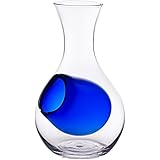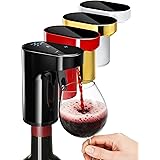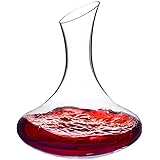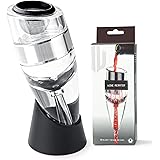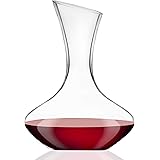Crafting the Perfect Pairing: Simple Strategies for Food and Wine
Navigating the world of wine pairing can feel like deciphering an ancient, complex code. Many men find themselves overwhelmed, unsure how to enhance their meals with the right bottle without making a faux pas. Yet, the truth is, pairing wine with food doesn’t have to be intimidating; it’s an enjoyable journey of discovery.
As Gerald Morgan Jr., a sommelier and owner of a fine wine shop, emphasizes in the video above, “real men drink wine,” and learning simple pairing strategies can significantly elevate your dining experience. Forget the pressure to be an expert. Instead, focus on practical guidelines that make every meal a more delightful occasion.
Embracing Simplicity: Your Personal Wine Journey
The biggest challenge in food and wine pairing often stems from overthinking. Many people believe there’s a single “correct” match for every dish, leading to unnecessary stress. However, Gerald advises a refreshing, less rigid approach that prioritizes personal enjoyment.
Imagine if every meal became an experiment, not a test. There are essentially two ways to approach wine at dinner: either you want a glass you simply love to drink, or you’re aiming for a specific food and wine pairing that enhances both. If you’re simply enjoying a glass of wine on its own, choose what you like; the food becomes secondary.
But when you want the wine and food to “sing” together, as some connoisseurs say, a few basic principles come into play. It’s about creating harmony, where each component elevates the other. The goal is to avoid clashes that detract from either the food’s flavor or the wine’s character.
Mastering White Wine Pairings
When considering white wines, think light and crisp. These wines generally complement lighter dishes, allowing their delicate flavors to shine without being overpowered. This includes a wide array of options, from fresh salads to tender chicken dishes.
Furthermore, many pastas, especially those with creamy or white sauces, find a delightful partner in white wine. Imagine a rich Alfredo sauce cut beautifully by the acidity of a Chardonnay, creating a balanced and refreshing palate. This contrast enhances the overall culinary experience.
Sauce is a crucial component to consider when pairing. If your dish has a creamy sauce, a full-bodied Chardonnay can provide balance. For spicier foods, particularly Asian cuisine, white wines can cut through the heat effectively. Sauvignon Blanc, known for its crispness, and Chardonnay, with its creamy texture, are excellent choices to balance spice.
Remember, the goal is often to refresh the palate and prevent a heavy dish from becoming overwhelming. White wines, with their vibrant acidity and sometimes fruity notes, are perfectly suited for this role, making them ideal for appetizers and lighter main courses.
Decoding Red Wine Pairings
Red wines, with their broader spectrum of body and flavor, offer a diverse range of food pairing opportunities. Many people prefer red wine throughout their meal, even with lighter starters. For salads, particularly those with lighter dressings, a Pinot Noir is an excellent choice.
A Burgundian-style Pinot Noir, or those from Oregon or California’s Sonoma Coast, offer a lightness and earthy complexity that can complement greens without overwhelming them. Imagine a vibrant Pinot Noir paired with a prosciutto-wrapped melon salad; the wine’s fruit and acidity would beautifully balance the richness of the ham and sweetness of the fruit.
When it comes to heavier, richer dishes like marbled steaks (Wagyu, T-Bones), bold red wines become the hero. Cabernet Sauvignon, Cabernet blends, and certain Merlots (especially from Washington State or with “mountain fruit” character) are classic choices. The tannins in these wines bind with the fat in the meat, cleansing the palate and enhancing the savory flavors.
If you’re looking to explore beyond the classic steak pairings, consider a Zinfandel or Syrah (or Petite Sirah). These varietals offer a fantastic, often spicier, alternative to Cabernet. Just ensure the Syrah isn’t too earthy if pairing with a steak, as this can sometimes create an undesirable contrast. These bolder reds provide a powerful counterpoint to rich proteins, making each bite more satisfying.
The Sweet Conclusion: Pairing Wine with Dessert
Pairing wine with dessert might seem like a niche category, but it can be incredibly rewarding. The general rule is to ensure the wine is sweeter than the dessert itself; otherwise, the wine can taste bitter. Late harvest white wines, with their concentrated sweetness, are a natural fit for many fruit-based desserts or pastries.
Ports, known for their rich, often nutty, and berry flavors, are another fantastic choice for dessert. Imagine a Tawny Port alongside a cheese plate with dried fruits, enhancing the sweet and savory elements. These fortified wines offer a luxurious finish to any meal.
And for those wondering about chocolate, especially dark chocolate desserts, there’s a surprising but effective pairing: Cabernet Sauvignon. While many might reach for something overtly sweet, the dark fruit notes and firm structure of a good Cabernet can beautifully complement the bitterness and richness of dark chocolate. It creates a sophisticated, harmonious experience that truly elevates both. Imagine a decadent flourless chocolate cake with a robust Cabernet; the flavors meld into a symphony of richness.
Beyond the Rules: The Art of Manliness Approach to Wine Pairing
Ultimately, the most important rule in wine pairing is to keep it simple and trust your palate. Gerald Morgan Jr. perfectly illustrates this with a story of enjoying a 1996 Chateau Saint Sepage with pizza. This particular vintage was later ranked the number one wine in the world by Wine Spectator.
Despite its prestigious status, typically reserved for big steaks at a fine dining restaurant, it was enjoyed casually with friends and pizza, and it was “fantastic.” This anecdote powerfully conveys that enjoyment and personal preference trump rigid rules. The “Art of Manliness” philosophy extends to wine: be confident in your choices, explore what you like, and don’t let snobbery dictate your experience.
Experimentation is key; don’t be afraid of trial and error. The goal of food and wine pairing is to enhance your meal and your enjoyment, not to pass a test. So go ahead, explore different combinations, and discover what truly makes your taste buds sing. When you’re ready to explore how to pair wine with food, remember that your personal enjoyment is the ultimate guide.


